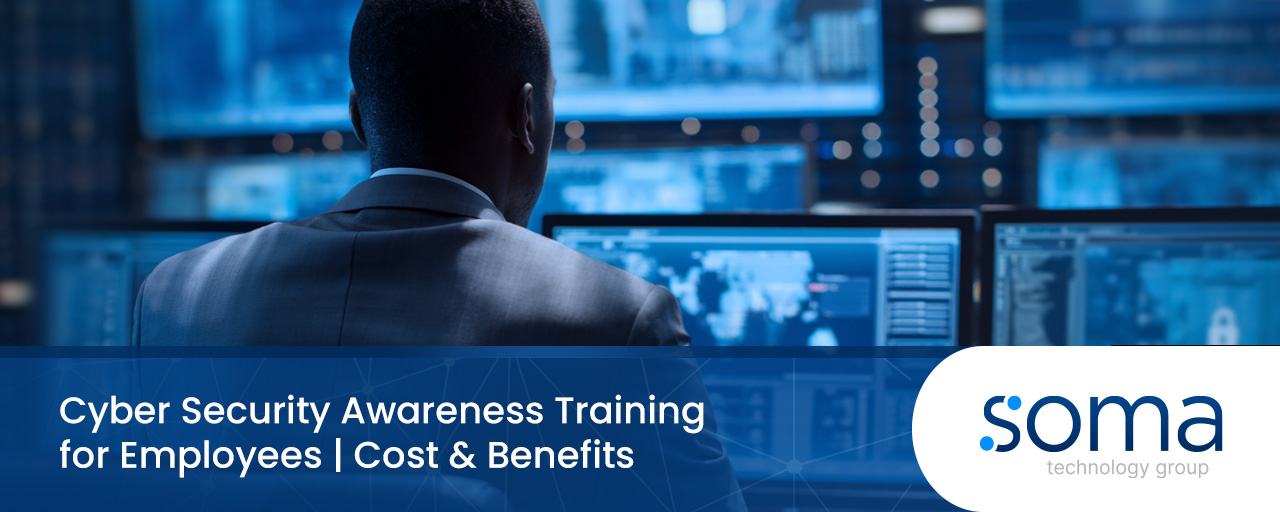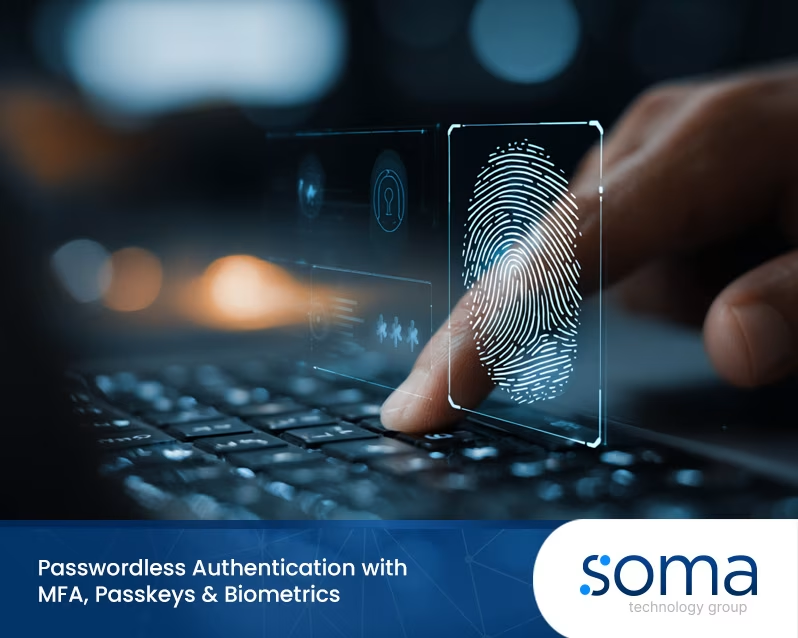
Cyber Security Awareness Training for Employees | Cost & Benefits
Cyber security awareness training for employees is no longer optional. With phishing scams and data breaches on the rise, your organisation’s weakest link could be an untrained team member. In this blog, we’ll explore what cyber security training involves, why it matters, and how to implement it effectively. You’ll also learn about common mistakes to avoid, key benefits, and practical tips for rolling out a training program that actually works.
What is cyber security awareness training for employees?
Cyber security awareness training for employees is a structured program designed to educate your staff about potential cyber threats and how to avoid them. It helps employees understand the risks associated with poor online habits, such as clicking on suspicious links or using weak passwords.
This type of training is essential for any organisation that handles sensitive data or relies on digital systems. It can reduce the likelihood of security breaches, protect your reputation, and ensure compliance with Australian data protection standards. A good training program typically includes modules on phishing, password safety, and secure data handling.

Common mistakes that weaken employee cyber awareness
Even with the best intentions, many businesses make critical errors when rolling out cyber security awareness training. Here are some of the most common pitfalls to avoid:
Mistake #1: Treating training as a one-time event
Cyber threats evolve constantly. If your training is a one-off session, employees will forget what they’ve learned and won’t be prepared for new risks. Ongoing training keeps knowledge fresh and relevant.
Mistake #2: Using generic content
Off-the-shelf training modules may not address the specific risks your organisation faces. Tailoring content to your industry and systems makes the training more effective and engaging.
Mistake #3: Ignoring phishing simulations
Phishing is one of the most common attack methods. Without regular simulations, employees won’t learn how to spot fake emails or suspicious links. Simulations help reinforce real-world awareness.
Mistake #4: Not measuring results
If you don’t track progress, you won’t know if your training is working. Use quizzes, feedback, and incident reports to measure effectiveness and adjust your approach.
Mistake #5: Failing to involve leadership
When leadership doesn’t take part in training, it sends the message that it’s not important. Involving managers sets a strong example and encourages team-wide participation.
Mistake #6: Skipping updates
Cybersecurity isn’t static. If your training content isn’t updated regularly, it becomes outdated and less useful. Make sure your training course reflects current threats and best practices.
Key benefits of employee cyber security awareness training
A well-structured training program offers several practical advantages:
- Reduces the risk of data breaches caused by human error
- Builds a security-first culture across your organisation
- Helps meet compliance requirements and avoid penalties
- Improves response times to suspicious activity
- Boosts employee confidence in handling digital tools
- Saves money by preventing costly cyber incidents

Why phishing awareness should be a top priority
Phishing attacks are responsible for a large portion of security breaches. These scams trick employees into revealing sensitive information or installing malware. Training helps staff recognise red flags like unusual sender addresses, urgent language, or unexpected attachments.
Phishing awareness training should include real-world examples and interactive elements. When employees see how easy it is to fall for a fake email, they become more cautious. This awareness is key to reducing your organisation’s vulnerability.
Core topics every cyber awareness training course should cover
A strong training course should follow a logical structure and cover essential areas. Here’s what to include:
Topic #1: Password management
Teach staff how to create strong passwords and why reusing them is risky. Include tips on using password managers and enabling multi-factor authentication.
Topic #2: Email and phishing safety
Show employees how to identify phishing attempts and what to do if they receive a suspicious message. Include simulated phishing tests for hands-on learning.
Topic #3: Secure data handling
Explain how to store, share, and dispose of sensitive information safely. This is especially important for teams handling customer or financial data.
Topic #4: Device and network security
Cover safe practices for using work devices, including mobile phones and laptops. Discuss the risks of public Wi-Fi and the importance of software updates.
Topic #5: Social engineering awareness
Help employees understand how attackers use manipulation to gain access. This includes tactics like impersonation, baiting, and pretexting.
Topic #6: Incident reporting procedures
Make sure staff know how and when to report suspicious activity. Quick reporting can limit damage and speed up your response.
Topic #7: Remote work safety
With more people working from home, it’s important to address risks like unsecured home networks and personal device use.

Practical steps to roll out a training program
Implementing cyber security awareness training for employees doesn’t have to be complicated. Start by identifying your organisation’s biggest risks. Then choose a training provider that offers relevant content and flexible delivery options.
Set clear goals for what you want the training to achieve. Communicate these goals to your team and explain why the training matters. Use a mix of videos, quizzes, and live sessions to keep things engaging. Finally, review results regularly and update content as needed.
Best practices for maintaining employee cyber awareness
Keeping your team cyber-aware is an ongoing task. Here are some tips to make it easier:
- Schedule regular refresher sessions every 6–12 months
- Use short, focused modules to avoid information overload
- Encourage employees to report suspicious activity without fear
- Reward teams or individuals who show strong cyber habits
- Keep leadership involved to reinforce the importance of training
- Review and update training resources based on new threats
Consistency is key. The more often your team engages with the material, the more likely they are to apply it in real situations.

How soma technology group can help with cyber security awareness training for employees
Are you a business with 20 or more employees looking for a reliable way to improve your team’s cyber awareness? Whether you’re growing fast or just want to tighten your security, we can help you build a program that fits your needs.
At soma technology group, we understand the risks that come with poor cyber habits. Our team delivers tailored training solutions that are easy to follow and built for real-world impact. If you’re ready to take the next step, reach out to us today.
Frequently asked questions
What is the typical cost of security awareness training?
The security awareness training cost varies depending on the size of your team and the depth of the program. For small to mid-sized organisations, prices can range from a few hundred to several thousand dollars annually. Customised training will usually cost more than off-the-shelf options.
Security training costs also depend on whether you choose in-person sessions, online modules, or a blended approach. Many security awareness training companies offer scalable pricing, so you can find a solution that fits your budget.
How often should we update our awareness training?
You should update your awareness training at least once a year. Cyber threats evolve quickly, and outdated content won’t prepare your team for current risks. Regular updates keep the material relevant and engaging.
A good training program should also include periodic refreshers and new modules when major threats emerge. This ensures your organisation stays ahead of potential security breaches.
What topics should be included in a training course?
A strong training course should cover phishing, password safety, secure data handling, and incident reporting. These topics address the most common risks employees face.
You should also include modules on remote work safety and social engineering. These areas are often overlooked but are critical to building a well-rounded cybersecurity awareness training program.
How do we measure the effectiveness of our training?
You can measure training effectiveness through quizzes, simulated attacks, and employee feedback. Tracking how employees respond to phishing tests is especially useful.
Monitoring incident reports and comparing them before and after training can also show improvements. This helps you refine the training program and focus on areas that need more attention.
Can small businesses benefit from cyber awareness training?
Yes, small businesses are often targeted because they may lack strong defenses. Cyber awareness training helps even small teams avoid common threats and protect valuable data.
Training also builds a culture of security within your organisation. It’s a cost-effective way to reduce the risk of cyber incidents and maintain trust with clients.
What makes a training module effective?
An effective training module is short, focused, and interactive. It should include real-world examples and practical tips that employees can apply immediately.
Modules should also be tailored to your industry and updated regularly. This ensures they stay relevant and support your organisation’s defense strategy.
.svg)
.webp)


